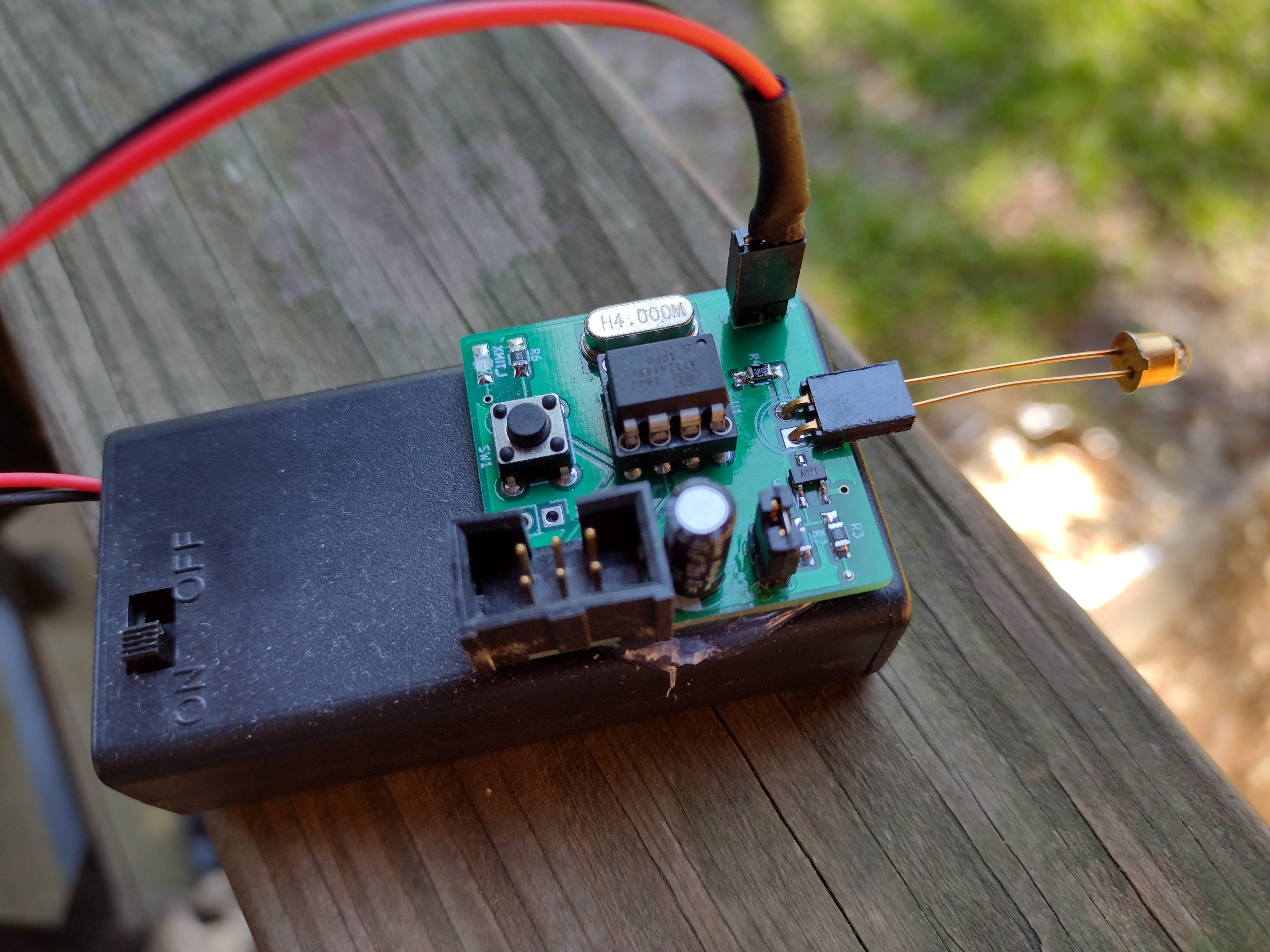I got some inexpensive logic-level MOSFETs in, model AO3400-SOT23-3L. I assembled a board (shown below) with the MOSFET, programmed the ATtiny85, pointed it at a TV. Nothing. I added a capacitor to deal with the high-current pulses. Nope. I then held it right next to the IR receiver on the TV. It worked.

So what was going on? Well, it deals with how MOSFETs work. A MOSFET acts as a capacitor. Once a voltage is applied to the gate of a MOSFET, it charges up as a capacitor. It also takes time to discharge when the voltage is brought down to ground. How much current that is source/sunk determines the charge/discharge speed and thus how quickly a MOSFET fully turns on/off.
Switching at 38KHz on the surface doesn't sound problematic with a small MOSFET until you consider that I was using a 1 percent duty cycle, resulting in a pulse width of around .263 microseconds. It apparently wasn't enough time for the MOFET to fully switch on with the current I was providing to the gate. Upping the duty cycle to 10 percent, made a dramatic improvement. The downside of upping the duty cycle is that many IR LEDs have a max safe duty cycle of 1% for high current pulses. I would love to measure and see this, but I would need an oscilloscope, which I don't have.
I'm limited when it comes to increasing current as the recommended source/sink max current for the ATiny85 is 20 mA. I could try upping it to the absolute maximum listed in the datasheet of 40mA but that does risk stability. A better solution would be to implement a gate driver either using a dedicated chip or using discrete components, but I would have to be careful about increasing standby current consumption to keep the excellent battery life.
Running it with a 10 percent duty cycle based on initial testing does appear to beat out boards using a BJT at the same duty cycle.
In conclusion, everything is a tradeoff. I got rid of the voltage drop of the BJT but in turn had to deal with the problems with a slower switching speed due to lacking a proper gate driver.
Discussions
Become a Hackaday.io Member
Create an account to leave a comment. Already have an account? Log In.